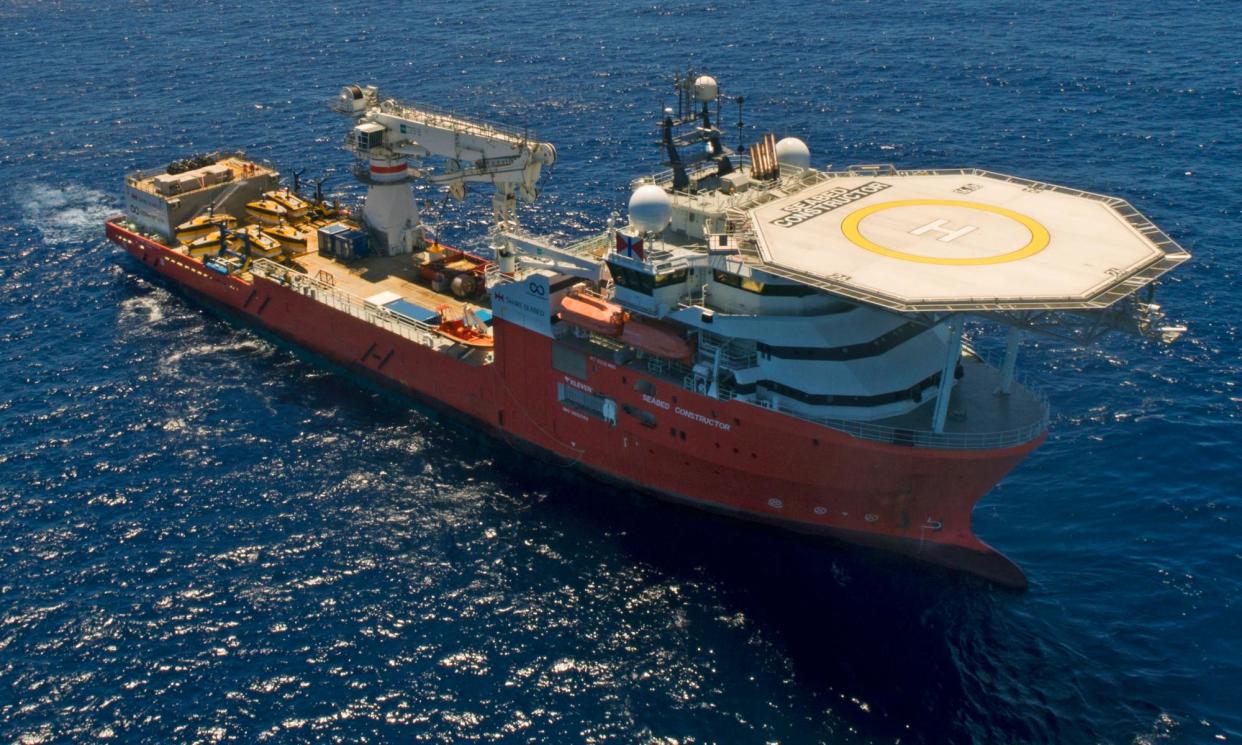‘We need to go again’: Australian who led MH370 search joins calls for fresh effort to find plane

The man who led Australia’s search for MH370 has urged the Australian government to support any new effort to find the plane, which disappeared 10 years ago on Friday.
On Sunday the Malaysian government said it was in talks with the US marine robotics company Ocean Infinity to discuss a new search. The company says it is willing and able to return to the search, and has submitted a proposal to the Malaysian government.
The Malaysian Airlines Boeing 777 departed Kuala Lumpur on 8 March 2014, bound for Beijing with 12 crew and 227 passengers on board – including seven Australians. About 40 minutes later it disappeared from the radar and its fate remains unknown.
The Malaysian government initially did a surface search in the South China Sea and the Strait of Malacca. But electronic blips picked up by satellites indicated the plane had turned around, flown until it ran out of fuel, then plunged into the Indian Ocean between Western Australia and Antarctica.
At that point Australia took over, with the Australian Transport Safety Bureau (ATSB) leading the Indian Ocean underwater search effort from May 2014 to early 2017.
Peter Foley, the program director for the ATSB-led search, said the longer any search was delayed, the smaller the chance that flight data recorders would still be useful. He would like to see the Australian government support a new effort.
“It’s been six years,” Foley said.
“We know that it’s close to the seventh arc in the southern Indian Ocean,” he said, referring to a band of water where the plane made its final satellite “handshakes”.
“We just need another search.”
Related: ‘The greatest aviation mystery of all time’: what really happened to flight MH370?
During the ATSB search period, debris washed up on islands in the Indian Ocean and along the African coast, which helped CSIRO drift modellers narrow down the possible crash site.
In 2018, the Malaysian government commissioned Ocean Infinity to do a second search on a “no find, no fee” basis. That was unsuccessful. Until now, Malaysia has consistently said it would not start a new search unless there was “new and credible information”.
The chief executive of Ocean Infinity, Oliver Plunkett, said the company also wanted to resume the search and was hopeful it would happen this year.
“We remain interested in returning to the search for MH370 and are actively engaged in trying to make this happen,” he said in a statement. “We now feel in a position to be able to return to the search for missing aircraft MH370, and have submitted a proposal to the Malaysian government.
“We hope to get back to the search soon.”
Malaysia’s transport minister, Anthony Loke, said Malaysia was committed to finding the plane and “cost is not the issue”.
He said he would meet Ocean Infinity officials to discuss a new operation.
“We are now awaiting for them to provide suitable dates and I hope to meet them soon,” he said.
The victims’ families have never stopped calling for more to be done.
On Sunday hundreds of relatives and supporters gathered near Kuala Lumpur to remember the missing and support calls for a fresh search.
Chinese families have also written to the Malaysian government calling for the investigation to be reopened.
I feel desperately sad for the families of the 239 people on board that aircraft who still have no answers
Peter Foley
Not only is the plane’s whereabouts unknown, so is the reason for its disappearance. Much suspicion has fallen on one of the pilots, Zaharie Ahmad Shah, and the possibility of a mass murder/suicide. Others have speculated about a “controlled ditching” or long glide, which might mean the plane travelled further than previously thought, and was under control, before hitting the water.
The ATSB has pushed back on that theory. It believes the speed of the plane’s descent meant it was freefalling and the pilot was unconscious.
In the absence of answers, theories are rife. Expert and amateur investigators have continued their own analyses.
Richard Godfrey is a founding member of the MH370 Independent Group and has worked to debunk many conspiracy theories.
Related: ‘It will be found’: search for MH370 continues with experts and amateurs still sleuthing
He has been studying the weak signal propagation reporter network, a global database of amateur radio waves that can be disturbed by aircraft, for clues. He said those clues, along with the satellite handshakes and drift modelling, pointed to areas of the Indian Ocean that have not yet been searched.
He said he thought the plane would be found this year.
“I would like to see governments do something, rather than nothing,” he said. “The flying public … the aviation industry and the MH370 next of kin are all looking for answers.”
Foley said he was “always hopeful” the plane would be found but that required investment from the Australian government.
“Because I know there’s absolutely no chance that the aircraft would be found unless we’re looking for it,” he said.
“The last search was 2018, that’s six years ago. And I feel desperately sad for the families of the 239 people on board that aircraft who still have no answers. It’s an absolute tragedy.
“We need to go again.”


